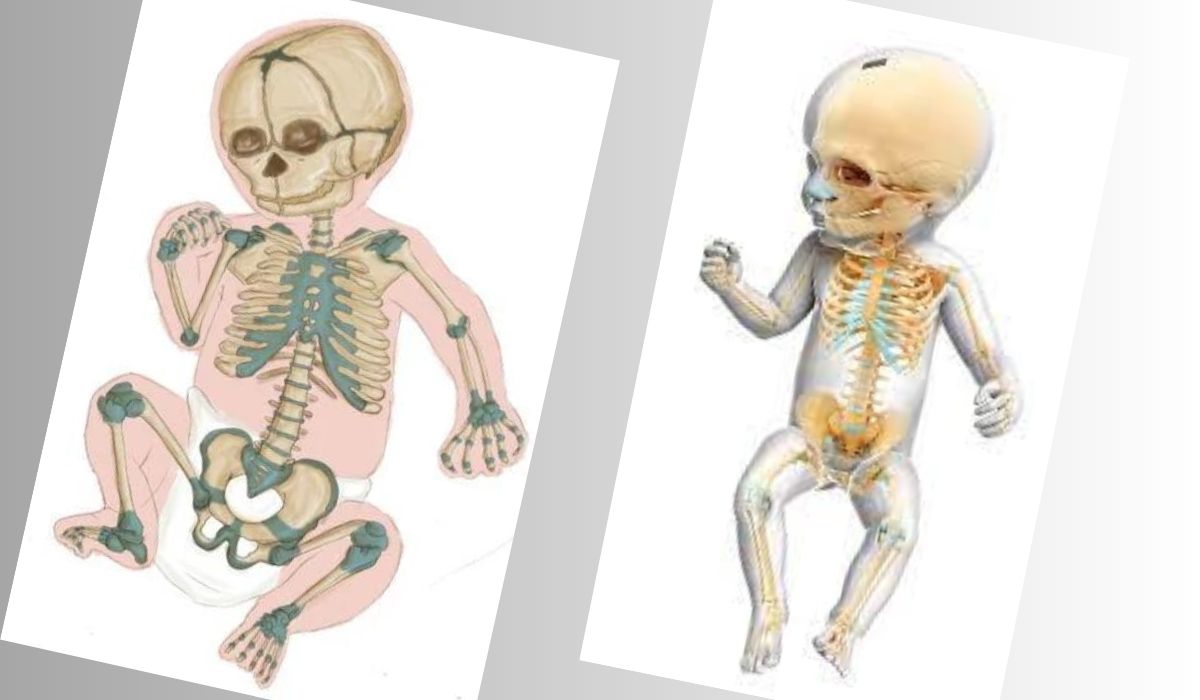When a baby is born, they already have a wonderful skeleton that will support their future development. A newborn baby’s skeleton is very different from an adult’s, who typically have 206 bones. In this post, how many bones does a baby have we’ll follow the intriguing development of a baby’s bones from birth to adulthood.
The Structure of an Infant’s Skeleton
A newborn has about 270 bones in his or her skeleton. These bones are still developing, so they are malleable and soft, made mostly of cartilage. This pliability is a deliberate design choice that facilitates a risk-free birth and allows for normal development in the infant years.
Bone Development During Pregnancy
Long before a baby is born, they begin the process of bone growth. Ossification, the transformation of cartilage into bone, occurs gradually during pregnancy. Minerals like calcium and phosphorus are deposited progressively to form the skeleton and strengthen the bones in preparation for life outside the womb.
Birth: A Surprisingly Flexible Skeleton
A newborn baby’s bones are surprisingly pliable and flexible. Because of its pliability, the skull can be compressed during birth without causing any harm. As a newborn grows, their bones are stronger and the soft places on their head, called fontanelles, close.
Bone Fusion and Growth
Some of the bones in a growing child begin to join together. By the end of the first year, many of the formerly separate bones, especially in the skull and spine, begin to merge into one another. This merging persists through the toddler years and into early childhood.
Factors Influencing Bone Development
Genetics, diet, exercise, and general health are only few of the variables that affect a baby’s bone growth. The rate and pattern of bone formation are mostly determined by genetics, but good nutrition, particularly an adequate intake of calcium and vitamin D, is essential for healthy bones.
Common Myths and Facts about Baby Bones
- Myth: infants have the same number of bones as fully grown humans.
- Fact: Babies have more bones than adults because they have more bones in their bodies that are not yet fused together.
- Myth: A common misconception is that a baby’s bones are weak and readily fractured.
- Fact: Even though they are more malleable, a baby’s bones are strong enough to resist the physical demands of labor and early childhood.
How to Support Healthy Bone Growth
Healthy bone development can be promoted by providing a balanced diet and encouraging tummy time. Bone-building minerals can be found in breast milk or fortified formula. Babies’ skeletons benefit indirectly from tummy time because it helps them grow stronger neck, shoulder, and arm muscles.
When to Be Concerned: Bone Abnormalities
Most skeletal differences are completely typical, but some abnormalities may call for medical attention. Developmental dysplasia of the hip (DDH) and other congenital limb abnormalities require quick diagnosis and treatment for optimal outcomes.
The Role of Nutrition in Bone Health
Good diet plays a critical role in fostering bone growth. Dairy products, green leafy vegetables, and fortified foods are all good sources of calcium, which aids in bone calcification. The “sunshine vitamin,” vitamin D, aids in the body’s utilization of calcium.
Baby Bone Injuries: Causes and Prevention
Injuries to the baby’s bones are uncommon, although they do happen. Fractures can occur from falls or improper handling. Safe environments and gentle handling by caregivers can help prevent these types of injuries in infants.
Physical Milestones and Bone Maturation
A baby’s bones continue to develop as they attain new developmental milestones. Important developmental milestones that promote bone growth and maturity include learning to crawl, stand, and walk.
Comparing Baby Skeletons to Adult Skeletons
The skeleton of a newborn is drastically different from that of an adult. There are more bones in a baby since they are made up of many parts that eventually join together. In addition, a child’s bones alter in both size and form as they develop.
Conclusion
The path that bones take throughout development in infants is amazing and complex. A baby’s skeleton goes through many changes, from being soft and malleable at birth to gradually fusing and maturing afterwards. Maintaining strong bones requires a combination of factors, including proper diet, attentive care, and a secure environment. The finest potential foundation for an infant’s future health and happiness can be provided if we take the time to learn about the intricacies of their skeletal development.
FAQs
Are babies born with kneecaps?
When do a baby’s fontanelles typically close?
How can I ensure my baby gets enough vitamin D for bone development?
Can babies engage in physical activities that promote bone growth?
What are some signs of abnormal bone development in infants?











